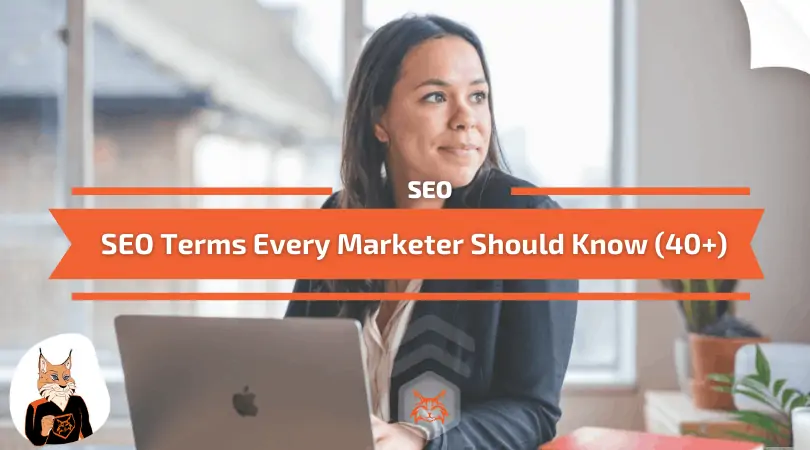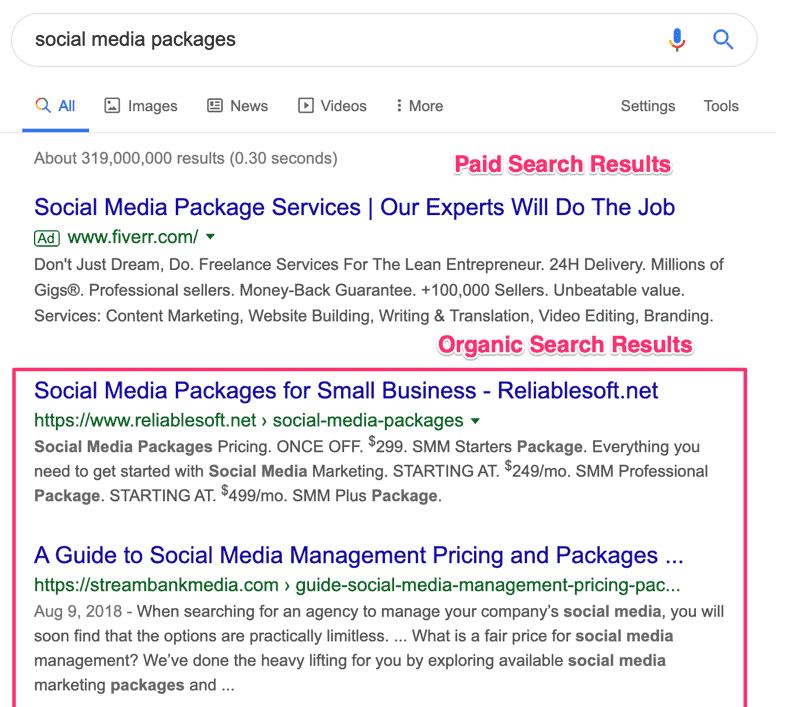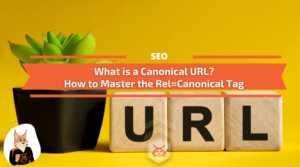SEO or Search Engine Optimization is a vast topic to understand. In fact, it’s an essential tactic to be used by every digital marketer for driving traffic to their website.
This article will walk you through all the top 40 SEO terms that every marketer must know. But before we dive into that, let’s first understand what SEO is and its importance in the digital marketing space.
Understanding SEO
Search Engine Optimization is the process of boosting the amount and quality of traffic to a website using organic search results.
SEO is composed of three following things:
- Quantity of Traffic refers to the right & relevant traffic coming to your website through the search engine’s result pages. If it’s more, it’s better.
- Quality of Traffic – Your site may attract thousands of visitors from all over the world. But, if you attract visitors who’re looking for earphones or mobile phone accessories while you sell apparel, you’re doing it all wrong. So, you would want to attract people who are looking for products which you sell.
- Organic search results – Ads offer a major contribution to SERPs. Organic traffic refers to the traffic for which you don’t have to pay. Organic search results come from the unpaid traffic generated by SERPs.
https://www.reliablesoft.net/wp-content/uploads/2019/09/paid-organic-search-results.png
Why is SEO Important?
SEO is essential for brands and businesses in the current digital era as it provides them the visibility they need to drive customers to their website.
Let’s take a look at the latest SEO statistics for marketing by Impactplus.com:
- In 2021, Google grabbed more than 70% of all global search traffic
- This year Google has received around 360 billion searches and still counting
- On the first page, the first five organic search results account for 67.60% of the total clicks
- 15% of the daily searches on Google are now among the billions of searches
- 57% of marketers claim that on-page content creation is the most effective SEO strategy
More than 80% of the buyers search online before making a purchase, so brands need to have a powerful online presence to stay ahead of their competitors.
A robust SEO strategy allows brands to rank their website on the top of search results using relevant keywords to attract their prospective buyers and make them go through the sales funnel.
40 Essential SEO Terms
Anchor Text
Each link is composed of two significant elements. One is anchor text, and the other is the web address to which the link indicates/points. The anchor text acts as a link.
For example, you are writing a blog about top video marketing strategies. In the post, you wish to use a link to another blog titled – Top Explainer Video Companies of 2021. So, you use the anchor text – ‘explainer videos’ to link to that blog.
Anchor texts work extremely well whenever you need to link back to your website using a relevant keyword as the anchor text.
301 redirect
Let’s understand redirection first. Redirection means when you visit a specific web page, and just after that, you are redirected to a different web page.
There are two types of redirection processes – Temporary and Permanent. From the user’s point of view, there isn’t any difference between the two. But if we look from the search engine’s perspective, there is a difference.
301 redirect is a permanent type of redirection. It tells search engines that the web page they wish to access has got its address changed permanently. This signifies that the existing rankings of the page must be shifted to the new address.
Backlinks
A backlink is nothing but placing a link on another website that points back to our own website. Using numerous backlinks with relevant anchor texts is the best way to boost your search engine rankings.
Alt Tag
Alt Tag is an HTML characteristic of the IMG tag. The IMG tag is for showing images. The alt tag is a text that is displayed when the image doesn’t load.
An IMG tag looks like: <img src=”clock.jpg” alt=”picture of a clock” />
Alt Tags carry SEO value. Google cannot see whatever the real image presents, but it can read the alt tag. Therefore, Alt tags are good to inform Google what’s on the images.
Canonical Tag
Canonical Tag is an HTML link element that allows webmasters to tell search engines about any duplicate content web pages that they created. It is located in the Head section of the HTML structure.
An example of a Canonical Tag: <link rel=”canonical” href=”http://www.example.com/” />
The main purpose of this tag is that when a search engine sees it, it doesn’t rank that particular page and moves the rankings to the canonical page.
Black hat SEO
Like everything else, there’s a dark side to SEO too! Black Hat SEO is the term used for all SEO practices that are unethical or manipulative and may prove harmful to your website. Such practices may even get your website banned from search engines.
Deep linking
Deep linking refers to the process of hyperlinking to point to a specific image or page on a website instead of linking that website’s homepage.
By linking to specific pages on your website using relevant anchor texts, you can boost the ranking of those pages. Building excellent deep links can be beneficial for SEO.
Cloaking
Cloaking or Page Cloaking is creating a web page that portrays different content to users and search engines. This results in good rankings for the targeted keywords and brings real users with unrelated content and offers.
Domain name & Hosting
The domain is the unique name or address on the web. For instance, the domain name of this blog is mediadigi.com.
Besides, hosting is the place where a website is stored on the internet. You require a web host to own a website.
Do-follow link
It’s the basic HTML link without any rel=’nofollow’ attribute. Do-follow links hold a lot of importance in SEO.
Keywords
Search engine optimization is incomplete without keywords.
Keywords are words or phrases that hold SEO importance for a particular website or web page.
For instance, if you’re writing a blog about the best home remedies for the common cold, the keyword would be remedied for a common cold. It is the keywords you want to rank for so that users find your blog when they type ‘remedies for common cold’ on Google.
Keyword Density
Keyword density refers to the number of times a specific keyword or phrase appears in written content.
To calculate it, you divide the number of times a keyword shows in an article by the total number of words the entire article has and multiply the result by 100. The final result is known as a percentage score.
Keyword density greatly impacts the SEO of a post. So, if a piece of text has high keyword density, it will get good rankings.
Duplicate Content
Duplicate content means having the same content on two separate pages of a website. It is considered harmful from an SEO perspective. Google doesn’t prefer websites having the same content on them and sometimes penalizes them for this.
Keyword Stuffing
Keyword stuffing refers to the situation when a keyword or phrase is used quite many times in a piece of text to the extent that the entire piece doesn’t look natural any longer.
Keyword stuffing is often done to increase keyword density. And therefore, it can prove bad for your website’s SEO.
Latent Semantic Indexing (LSI)
LSI is a key factor for search engines while ranking a web page. Search engines monitor the written content on a website or page and look for LSI keywords that support your main/primary keyword. If they find LSI keywords in your content, your page’s ranking automatically boosts for your main keyword.
LSI keywords are more or less like your main keyword.
For instance, if your main keyword is ‘photography equipment, ‘ the LSI keywords will be ‘camera,’ ‘tripod,’ ‘photography,’ ‘digital photography, etc.
Therefore, LSI keywords determine whether a piece of text is genuine & original or just stuffed with random keywords to boost the rankings.
Link building
Link building is an important SEO term & strategy, which means getting backlinks to your website. For instance, if you publish a blog post on any site with a link to your own website, you’ve done some link building. Link building is necessary for a highly ranked page.
Linkbait
Linkbait means highly viral content. It mostly refers to content that can attract numerous links. Creating linkbait content is quite tough, even when the principles are simple.
Linkbait content can be chosen through the following ways:
- Creating content of exceptional quality
- Creating content that is too funny
- Creating content that brings huge value for free
Besides text, linkbait can be images, videos, graphics, and audio as well.
Link Sculpting
The “no follow” attribute of a link allows you to turn some website links unimportant for SEO. So, if you use this attribute properly, you can ‘Sculpt’ the PageRanks of various pages on your site. You can boost the visibility of a few pages by providing them with follow links and reduce the visibility of other links through ‘no follow’ links.
Link farm
It refers to the network of websites connected for increasing their rankings and PageRanks.
To create a link farm, you will have to launch different websites on a different server. Then link all the pages to one another. Link farm may not be so strong when it consists of 4-5 sites, but it can be an entirely different story with hundreds of sites.
Meta keywords
Meta keywords is a list of keywords or phrases for blogs or a post used by search engines.
It is important to include a list of relevant meta keywords. Also, adding your main keyword to this list can be beneficial too.
Meta description
It is a brief description of a blog, post, or page used by search engines. A meta description is not displayed on the blog or article.
Whenever someone searches for a keyphrase on Google, it decides which websites should be shown and in what order. Google shows a title as well as a description for every website. Google puts this description together in either of the following ways:
- If the meta description has the keyphrase searched by the user, then Google shows the meta description
- If there’s no key phrase in the meta description, Google shows a section of content on the website that contains it
Meta tags
Meta tags consist of two things – meta keywords and meta description. Meta tags are located in the HEAD part of the HTML structure of a web page.
The information contained in the meta tags is used by search engines and helps them know what the web page is about. So, it’s favorable to set them manually for each post or page.
No follow
“No follow” is one of the most important and popular SEO terms these days.
Every link in the follow link. This signifies that every time a search engine sees a link, it follows it, checks where it goes, and takes it as a vote. The nofollow attribute tells the search engine that it shouldn’t pay attention to such a link.
Here is an example of a nofollow link: <a href=”http://wikipedia.org/” rel=”nofollow”>Wikipedia</a>
On-page SEO
On-page SEO refers to any practice that you do on your web page to boost its rankings.
This includes improving title tags & descriptions, tuning the HTML structure, monitoring the keyword density & usage, improving the internal links, etc.
Off-page SEO
Off-page SEO refers to anything that you do outside of your web page to boost its rankings. Link building is the main component of off-page SEO.
Organic Search
Organic search refers to typing a keyword or phrase into Google and clicking on the search button.
Organic Search Results
When you search for something on Google, the result usually comes in two different columns. The right column represents the paid results, and the left column represents organic results.
PageRank
PageRank is an algorithm developed by Larry Page to measure the importance of a particular website. It is usually believed that the more backlinks a website has, the higher the PageRank will be.
Pages with the highest PageRanks are the ones that are easily recognizable and popular on the Internet.
Sandbox or supplemental index
Google has a second index known as the sandbox or supplemental index. Not every new page is placed in the main index, and many are placed in the sandbox until Google decides whether they must be placed in the main index or not.
Websites that are located in the sandbox do not appear in the usual searches. Therefore, it’s not good for a website to be in a sandbox.
Robots.txt
Robots.txt is an important file for SEO purposes. It informs search engines about the areas of the blogs that are restricted for them. Restricting search engines accessing some web pages might not look good initially, but it’s actually valuable.
It prevents search engines from accessing duplicate content on the website. It also allows excluding all the admin pages from indexing.
SEM
SEM or Search Engine Marketing refers to the marketing of products or services using search engines. It can be done in two ways:
- Optimizing a website, so it ranks higher in the organic search results
- Using paid clicks, where your website is listed in the ‘sponsored listings’ section
SEO
SEO or Search Engine Optimization is the process of improving a website’s ranking on the search engines for specific keywords. SEO is constantly changing & evolving. The SEO practices that worked yesterday might now be fruitful today or in the future.
While practicing SEO, you must take care of both on-page and off-page SEO.
SERP
It stands for Search Engine Results Pages. These pages appear once you search a keyword or phrase on Google or any other search engine.
Supplemental Result
The supplemental result is a URL placed in Google’s sandbox, a database that contains less important pages evaluated by Google’s PageRank algorithm.
A supplemental page still ranks in search engine results, but only if fewer pages in the main index come back in the search.
Spider
Search engine spider or crawlers is a software that browses the internet, searches for new websites, sees what’s happening on them, and then returns the data to Google so that those sites can be indexed and ranked.
Title Tag
Every page owns a title tag. A title tag is only visible to a user at the browser’s title bar.
Title tags are important from the SEO perspective. It helps search engines to know what a particular page is about. This is why it’s important to have a good title tag.
How to create a Title Tag?
If you use WordPress, then it’s a simple process. It would help if you remembered that the title tag of every new post or blog is the same as its title. However, you can change the title tag using a plugin – All In One SEO Pack.
URL
URL – A Uniform Resource Locator means the unique address of any web page.
XML Sitemap
An XML sitemap is a file that usually solves the purpose of providing search engines with a map of various URLs present in a blog, posts, pages, archives, etc. This helps in the faster indexing of your blog.
White hat SEO
White hat SEO refers to all those SEO practices that search engines motivate you to do. As we all know, SEO space keeps changing; therefore, you must keep reading the latest SEO blogs to stay abreast of the changing trends.
Search Engine
Everyone knows what a search engine is. But, to define – a search engine is a software application that helps users search for a specific keyword or phrase. Search engines consist of algorithms to search anything on them. These algorithms determine which sites should appear on the top in the search results.
The algorithms used by the search engines are not shared with the users. That is why anybody practicing SEO is only able to guess how to boost a website’s rankings.
Conclusion
We hope this post is helpful enough for knowing all the necessary terms related to SEO. However, new terms can be added to this list as SEO is a broad field and keeps evolving with time.




![Read more about the article How to create an Expert Roundup [Ultimate Guide]](https://competico.com/wp-content/uploads/2017/02/how_to_create_expert_roundup-300x167.png)


Some of the popular listing citations or directories such as Yelp and Google my business can help to display your company or brand features and keep them updated. Listing your site on business directories creates worthy backlinks. It will help your business to rank on google and show up your location. If you have a company that offers services and products locally, register your website on these business listing websites. Now, the question is how it helps?
Thanks for the information, appreciated